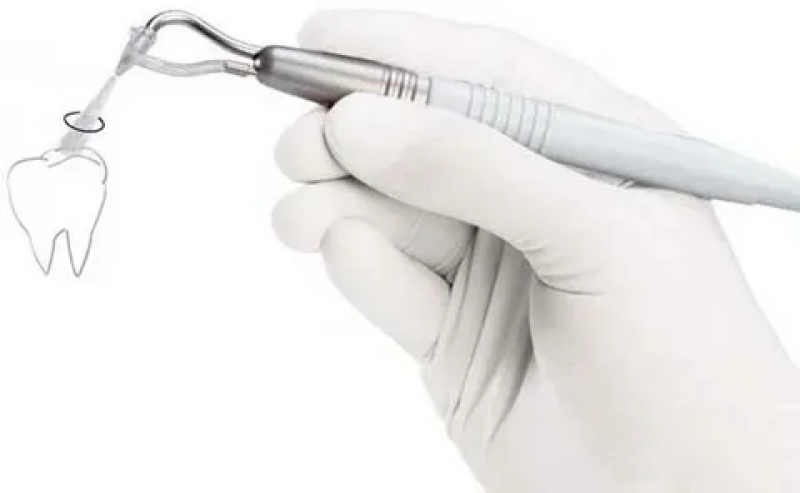The air abrasion unit has emerged as a pivotal innovation, revolutionizing various procedures in both the dental and industrial sectors. This technology utilizes a high-pressure stream of abrasive particles to effectively remove surface materials, providing a minimally invasive alternative to traditional drilling techniques. The precision, efficiency, and reduced discomfort offered by air abrasion units make them highly sought after in clinical settings and manufacturing processes alike. Their adoption continues to surge, driven by technological advancements and increasing demand for non-destructive surface treatment methods.
In-depth Understanding of Air Abrasion Unit Functionality and Mechanism
Air Abrasion Unit operate by propelling fine abrasive particles, typically aluminum oxide or silica, through a handpiece using compressed air. The stream is directed at the surface requiring treatment, where the abrasive impacts and removes material with remarkable accuracy. Unlike conventional rotary tools, air abrasion devices create less vibration and noise, enhancing user comfort. This technology facilitates surface cleaning, cavity preparation, and removal of defective restorations in dental practices, while in the industrial sector, it serves in delicate deburring, cleaning, and surface texturing tasks.
The mechanism’s refinement allows operators to adjust factors such as particle size, air pressure, and flow rate, enabling tailored treatments suited for varied materials and applications. This versatility extends its utility across different domains, from delicate enamel procedures to precision metalwork. The non-contact nature of air abrasion reduces heat generation during the process, minimizing damage to surrounding areas and improving overall procedural outcomes.
Exploring Key Advantages Driving Air Abrasion Unit Market Expansion Globally
The rising adoption of air abrasion units is largely attributed to its numerous advantages over traditional methods. In dentistry, the non-invasive approach eliminates the need for anesthesia in many cases, reduces patient anxiety, and preserves tooth structure by selectively removing decayed areas. Clinicians benefit from enhanced visibility and precise targeting, resulting in shorter procedure times and improved patient satisfaction.
From a commercial standpoint, industries appreciate the unit’s ability to handle intricate surface modifications with minimal tool wear and maintenance. The environmental benefits also play a role, as air abrasion does not produce hazardous dust or require chemical agents, promoting safer working environments and easier regulatory compliance. These attributes collectively fuel growing investments in research and technology development, propelling the global market’s robust growth trajectory.
Comprehensive Overview of Trends in Air Abrasion Unit Adoption Worldwide
The air abrasion unit market is witnessing a dynamic shift driven by technological innovations and expanding application arenas. Integration of digital controls and ergonomic designs has enhanced user experience and operational efficiency. Portable and compact models have gained traction, allowing mobile practitioners and smaller workshops to leverage the technology without significant infrastructure changes.
Emerging economies show promising demand due to increasing healthcare and industrial modernization efforts. Additionally, strategic collaborations between manufacturers and research institutions foster the introduction of new materials and abrasive formulations, tailored to meet evolving market needs. This continual evolution in product features and application methodologies continues to widen the technology’s reach across global markets.
Navigational Insights for Accessing Analysis of Air Abrasion Unit Market Reports
For those interested in comprehensive market intelligence, detailed analytic reports provide critical dimensions including regional performance, competitive landscape, and growth forecasts. These resources offer granular data on market drivers, restraints, and opportunities, assisting stakeholders in making informed decisions. The synthesized research integrates competitor strategies, technological innovations, and consumer behavior insights, forming a robust knowledge base for industry participants.
The availability of sector-specific segmentation, such as dental applications versus industrial usage, further enhances the navigability of these reports. This targeted framework allows businesses to align their strategies with market demands effectively, identifying lucrative niches and potential investment avenues. Such in-depth analyses are indispensable for manufacturers, distributors, and investors seeking to capitalize on the air abrasion unit’s expanding global footprint.
Transactional Perspectives on Purchasing and Integrating Air Abrasion Units in Professional Settings
Procurement of air abrasion units demands consideration of various factors including device specifications, compatibility with existing systems, and after-sales support. Commercial availability encompasses a range of models tailored to diverse needs, from basic versions intended for general use to advanced units featuring customizable settings and enhanced safety features. Evaluating warranty terms and maintenance services is crucial, as these aspects impact total cost of ownership and long-term operational efficiency.
Integration into clinical or industrial workflows should focus on training requirements, regulatory compliance, and potential return on investment. Increasing demand for minimally invasive techniques and high-quality surface treatments makes air abrasion units a valuable asset in enhancing service offerings. Therefore, purchasing decisions often align with expanding procedural capabilities and improving overall productivity in professional environments.
Commercial Factors Influencing Innovation and Market Competitiveness in Air Abrasion Units
Market competitiveness hinges on continuous innovation, cost reduction, and expanding applications. Companies are investing heavily in research to improve particle delivery systems, optimize energy consumption, and enhance ergonomic design. Competitive pricing strategies, coupled with flexible financing options, promote wider adoption among small and medium-sized enterprises.
Collaborative initiatives focusing on eco-friendly abrasive materials and digital integration highlight the commercial drive to meet sustainability goals and digital transformation trends. Customer-centric product development incorporating user feedback ensures products not only meet performance benchmarks but also facilitate ease of use. These commercial dynamics collectively shape the competitive landscape, reinforcing growth prospects in global markets.
Get This Report in Japanese Language: エアアブレーション装置
Get This Report in Korean Language: 공기 연마 장치
Read More Articles Related to this Industry- Major Components and Novelty in Gas Chromatography Systems
About Author:
Ravina Pandya, Content Writer, has a strong foothold in the market research industry. She specializes in writing well-researched articles from different industries, including food and beverages, information and technology, healthcare, chemical and materials, etc. (https://www.linkedin.com/in/ravina-pandya-1a3984191)
